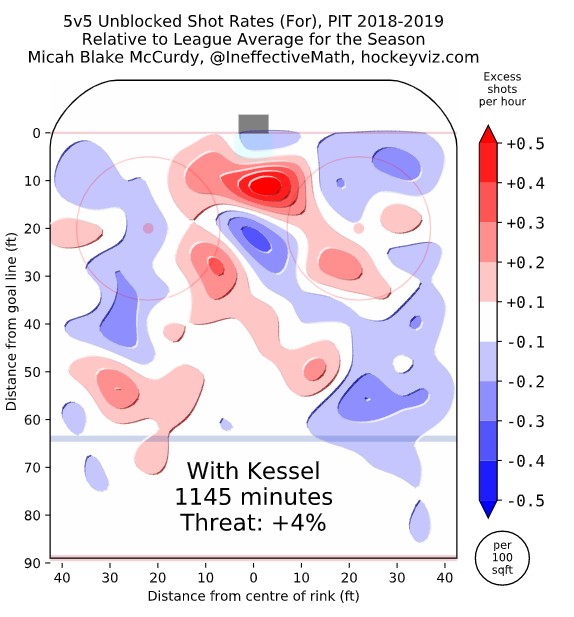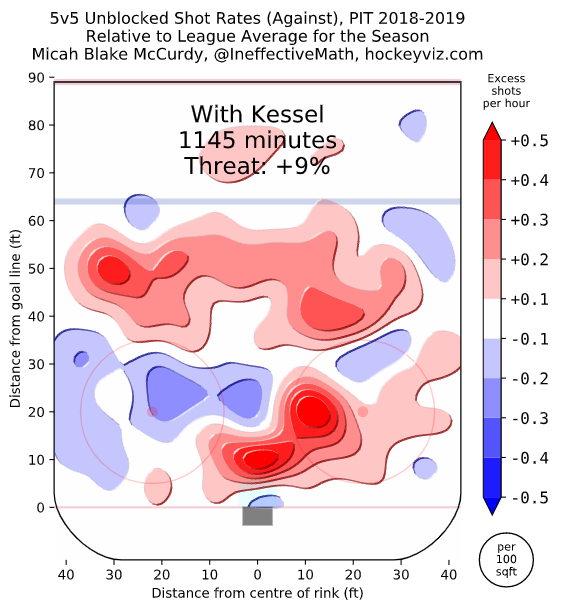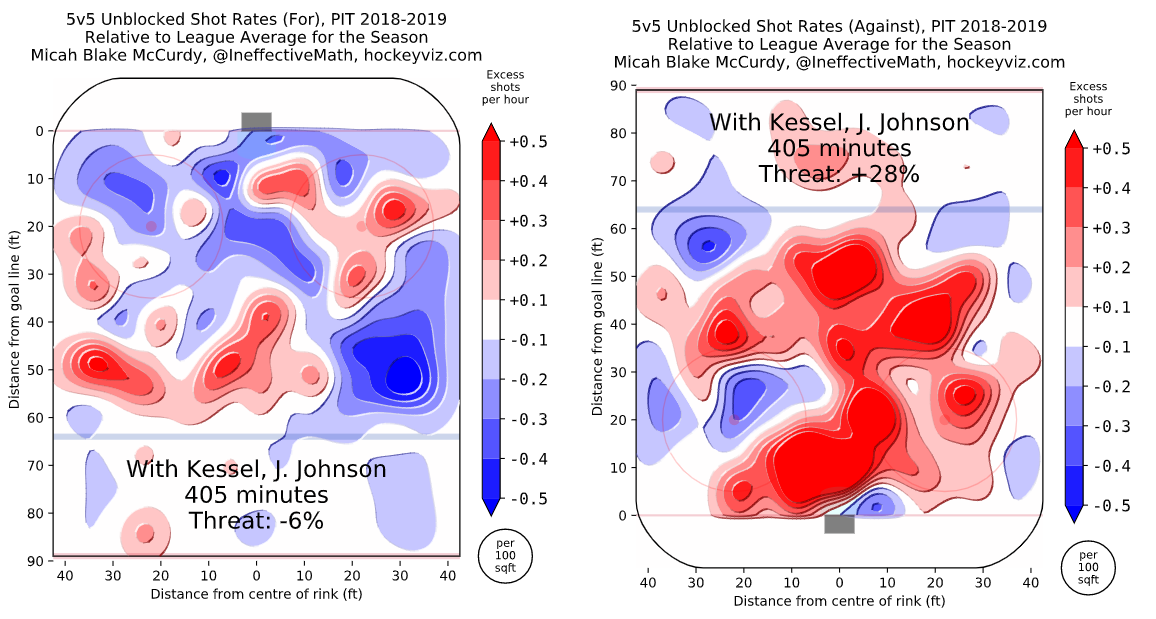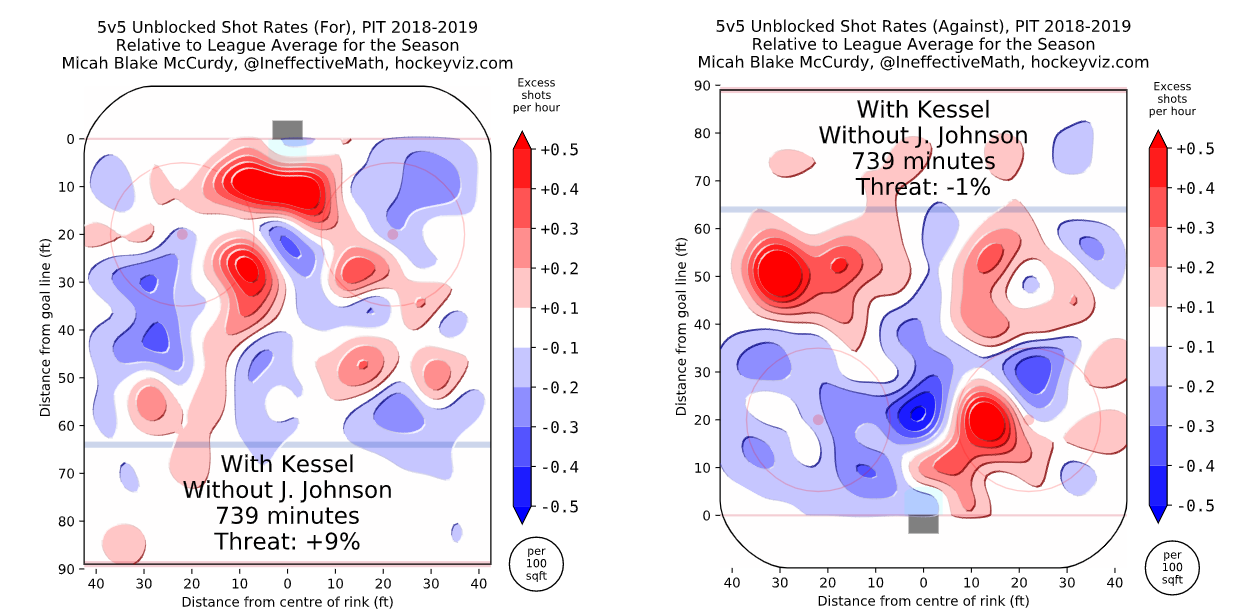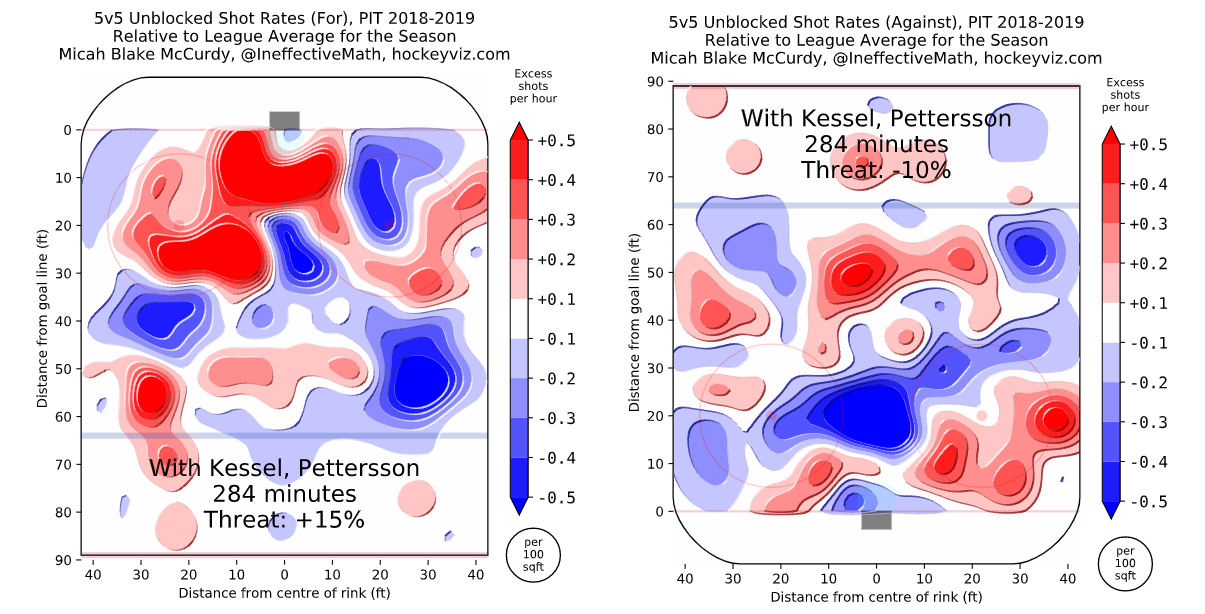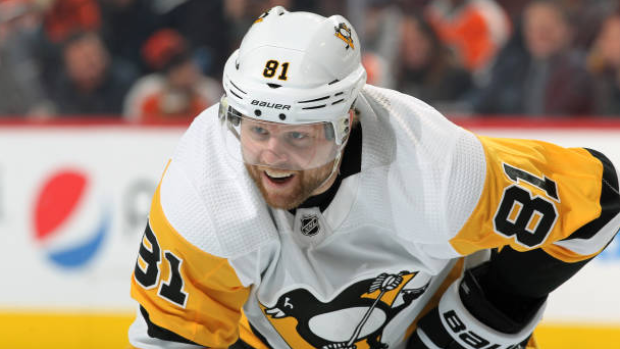
By now, we’re all well aware of the trade that was tabled between GM Jim Rutherford and Paul Fenton of the Minnesota Wild involving Phil Kessel and Jason Zucker (and Jack Johnson and Victor Rask).
What you may not have heard yet is that Phil Kessel slammed the door on the potential trade because the Wild are a pretty bad hockey team and because Phil Kessel controls where he lands. After providing an 8 team list where he can be traded to without permission, he can veto any trade he so chooses if it involves a team not on that list.
Either way, all signs point to Phil Kessel being traded this summer.
Penguins GM Jim Rutherford continues to talk to other teams about Kessel … it's a question of when not if for Kessel to be dealt but where exactly remains TBD.
— Pierre LeBrun (@PierreVLeBrun) May 23, 2019
THE KESSEL RUN: @TSNBobMcKenzie on @LeafsLunch1050 examining the likelihood of Phil Kessel being traded by the Penguins and the speculation surrounding his eight-team exception list https://t.co/4kMphLip2H #TSNHockey pic.twitter.com/3Ox8jyppiM
— TSN Hockey (@TSNHockey) May 24, 2019
But what if he doesn’t? And how can the Penguins make sure they get the best out of him?
Let’s check a few things as we move into Day 2 of #PhilKesselWeek here at The Pensblog.
All data herein via NaturalStatTrick.com unless otherwise noted.
We’re not gathered here today to talk about how Kessel scored 82 points in 82 games last season, his joint-second-best return of his career behind his 92 points last season.
We’re not going to talk about how Kessel scored 43 points at 5v5, good for his 3rd best return of his career and best as a Penguin. We aren’t going to talk about how his 28 assists at 5v5 was tied for his career high or how his 18 5v5 primary assists were his 2nd-most of his career, just 1 short of what he posted in 2013-14.
We certainly aren’t going to talk about how he scored 25+ total goals and 15+ 5v5 goals for the 9th and 8th times in his career respectively, despite shooting the puck substantially less than usual this season, or that he had a point on 82.69% of the goals scored while he was on the ice at 5v5 this season, a career best.
No.
First, let’s talk about the elephant in the room: his plus/minus.
Kessel was a minus-19 this season. Similar to Evgeni Malkin, this is a data point used to define Kessel as being abjectly bad defensively and a reason to trade him. Of course, we know that plus/minus is inherently flawed, but his -19 was his worst as a Penguin and 3rd worst of his career.
But when you break it down, you see a similar trend to what we saw with Malkin: weird, nearly non-replicable scenarios in which an inordinate amount of goals went in while Kessel was on the ice.
| Phil Kessel – On-Ice Scenario | Goals For | Goals Against | Difference |
| All Situations | 100 | 75 | 25 |
| All Even Strength | 56 | 62 | -6 |
| 5-on-5 | 52 | 44 | 8 |
| Penguins w/ Empty Net | 2 | 13 | -11 |
| Penguins vs. Empty Net | 1 | 0 | 1 |
| 4v4/3v3 | 1 | 5 | -4 |
| Powerplay | 44 | 13 | -13* |
*Though the difference between 44 and 13 is actually 31, because the 13 goals against are all considered a “minus,” the +31 is not calculated in the NHL’s Plus/Minus statistic.
Much like with Malkin, the dumpster level plus/minus finds itself overwhelmingly impacted by the shorthanded goals against this season, of which the Penguins gave up 15 in total, and the empty net goals against that the Penguins gave up. That makes sense when you consider Kessel spent 909:12 of his 1474:13 total ice time with Evgeni Malkin.
We’re not going to go goal-by-goal to examine and associate fault on the shorthanded goals, but what remains is twofold:
- Phil Kessel, until this season, has never been on the ice for more than 9 shorthanded goals against in a single season and in his previous 3 seasons with the Penguins, was on the ice for a combined 11 shorthanded goals against.
- The last time Phil Kessel has seen anything close to a -11 differential with his team’s net empty was his 0-9 in his first season with the Leafs. Since then, the differentials have been the following: -5, -3, -4, -7, -4, -5, -6, -1, -11 (this season). Like Malkin, it’s hard to imagine Kessel will ever see such a disparity in goals scored while his team’s net is empty like this.
In fact, this is where we see the inherent flaw with plus/minus. Because, much like with Evgeni Malkin, Kessel’s season is being defined by the goals that went in while the Penguins were committing everything they had offensively (i.e. on the powerplay and with their net empty). That works out to under 300 minutes of Kessel’s total ice time (~20.31%). But in focusing on his plus/minus, his +8 goal differential at 5v5 is either overlooked or ignored.
It shouldn’t be.
But let’s suppose we use it as a baseline for “Phil Kessel is bad defensively and needs to go,” understanding that Phil Kessel is, in fact, not very good defensively.
For instance, over the course of his career at 5-on-5, Kessel owns a sub-50% share of on-ice shot attempts (48.98%), unblocked shot attempts (48.39%), shots on goal (48.76%), scoring chances (48.68%), and high danger scoring chances (47.54%). The only thing that’s excluded here is actual goals scored, of which he owns an on-ice share of 51.42% (meaning he is on the ice for more goals for than against at 5v5 in his career).
Relative to his teammates, Kessel’s teams have generally found themselves giving up ~5 more shot attempts per hour when he is on the ice versus when he is off of it. This general trend, too, holds true across the same set of data buckets, save for actual goals.
This season was no different.
What we see above, via Micah Blake McCurdy‘s Hockeyviz.com, is the rate of unblocked shots that the Penguins generated (top) and allowed (bottom) with Kessel on the ice last season relative to the league average.
For attacking purposes, red is good. It means the Penguins are getting more unblocked shots towards the net from those areas of the ice compared to the league average. A “Threat” in the positive is also good: it means that the Penguins are generating dangerous shots at a higher frequency compared to the league average.
In the defensive zone, red is bad. It means the Penguins are giving up more unblocked shots towards the net from those areas of the ice compared to the league average. Similarly, a “Threat” in the positive is bad defensively: it means that the Penguins are allowing dangerous shots at a higher frequency compared to the league average.
So with Kessel on the ice last season, the greater “Threat” was in the defensive zone. That’s not ideal, especially when you consider that he started 76.38% of his shifts in the offensive zone, just 3.87 per hour of 5v5 play in the defensive zone, and is a gifted offensive weapon playing most of his time against “Middle” competition (per PuckIQ.com).
So if deployment wasn’t an issue for Kessel, then what might have been?
Well, let’s take a look at his teammates.
At 5v5, Kessel spent 673:57 with Malkin and 300:13 away from Geno. Given what we’ve already looked at with Malkin, let’s exclude him from this exercise and instead look to the defensemen that Phil spent time with: namely Jack Johnson and Marcus Petterson (the reasoning will become clear shortly).
It stands to reason that, given the frequency Malkin and Kessel were together on the ice and the amount of time that Johnson spent with Malkin, we can reasonably assume that Johnson’s impact on Kessel will be reflected in a similar light: bad.
And in the 400+ minutes Kessel and Johnson spent together at 5v5, we see just that:
A few things should stand out when you look at the above. First, Kessel sees his overall offensive zone Threat drop from +4% altogether to -6% when on the ice with Jack Johnson and sees his overall defensive zone Threat go from +9% to a staggering +28%, despite them having started 75.86% of their shifts together in the offensive zone. Given what we know about Jack Johnson, this shouldn’t be a surprise.
It makes sense, too, looking at the shot location: when Kessel is on the ice with Johnson in the offensive zone, the red bands you see in the low slot for solo Kessel move further out away from the net, while more and more blue pops up, suggesting that the Penguins are generating fewer unblocked attempts from those areas relative to the league average.
On the flip side, Kessel and Johnson get destroyed in the defensive zone together, nearly turning the entire defensive zone red. That means, relative to the league average, these two were on the ice more unblocked shot attempts against from damn near everywhere.
But, looking at Kessel when he’s away from Johnson and the story is very, very different:
When Kessel was on the ice without Johnson, the Penguins lived in the low and high slot areas, as you can see on the left, relative to the league average. Kessel’s offensive zone Threat when he was on the ice without Johnson jumps up to +9%, which makes sense given the area of red directly in front of the net.
What’s also noteworthy, too, is that Kessel’s defensive Threat is on the right side of zero without Johnson. You see the most defined red areas directly below where he would be defending (low, to the right of the net) and at the opposite point of where he would be defending as a right wing.
Now, considering that Letang spent most of his 5-on-5 time last season playing with Sidney Crosby as his forward and 911:19 of his 1252:13 with Brian Dumoulin, there simply isn’t enough Kris Letang to go around to help boost Kessel and Malkin. So, ruling out Letang (and Dumoulin, by default) and understanding that Johnson (and Schultz/Maatta also by default) just didn’t work, that leaves us with, in effect, just Marcus Pettersson to deploy with Malkin and Kessel.
Pettersson is intriguing, too. The Penguins seem keen to hold on to the pending RFA and for good reason: he’s good.
With Kessel, they started 79.75% of their 5v5 shifts in the offensive zone over the 280+ minutes they played together. Much like Kessel, Pettersson saw more time against “Middle” competition, via PuckIQ,while starting just 43.10% of his 5v5 shifts in the offensive (compared to that of 54.24% for Johnson). Pettersson seems capable of handling a top 4 role.
With Petterson, though, is really where we see Kessel flourish.
Relative to the league average, the Penguins were swimming in unblocked shots down low in the offensive zone, beating the wheels off their opponents when Pettersson played with Kessel.
The same can be said in the defensive zone, where teams were only able to get an excess amount of shots relative to the league average from the center point and lower danger areas. Still, the blue is always encouraging, particularly when it appears and is darker in the middle and low slot as it is here.
Remember, Kessel’s overall offensive zone “Threat” was +4% and +9% defensively. With Pettersson, those jump to +15% and -10%, respectively, meaning that when Kessel is on the ice with Pettersson, the Penguins are a force to be reckoned with in the offensive zone and far from a liability in the defensive zone.
Naturally, as you’d probably expect, when Kessel and Pettersson were on the ice together, they controlled the share of the following:
| Kessel w/ Pettersson | Percent Share |
| Shot Attempts | 53.30% |
| Unblocked Shot Attempts | 51.86% |
| Shots on Goal | 53.77% |
| Goals | 68.42% |
| Expected Goals | 57.03% |
| Scoring Chances | 58.00% |
| High Danger Scoring Chances | 61.39% |
In fact, among Penguins defensemen that played regularly and are still on the team (i.e. omitting Chad Ruhwedel, Zach Trotman, and Jamie Oleksiak), these shares with Pettersson rank 1st across the board aside from expected goals, scoring chances, and high danger scoring chances. However, all three of which find Kessel with Pettersson ranking 2nd behind Kessel with Erik Gudbranson (Pettersson’s partner).
Still, in all likelihood the Penguins are going to trade Phil Kessel. When the likes of Pierre Lebrun and Bob McKenzie say it’s probably happening, then it’s probably happening.
And for the Penguins, a team that seems set on trying to bring in forwards that can comfortably and capably play at both ends of the ice, shifting out Kessel would make sense for that reason. Across 13 NHL seasons, he’s been everything but good defensively. Asking him to do so at 31 would be akin to asking your dog to plan a lunar mission with no space exploration training.
Should they not, though, there is evidence to suggest that they can make Phil Kessel work in the way they want it to work without a major overhaul.
And if the 280+ minutes of success are to be believed, the fix is simple: keep Kessel and Johnson off the ice together and play Phil with Pettersson more often at 5-on-5.
Add The Sports Daily to your Google News Feed!

